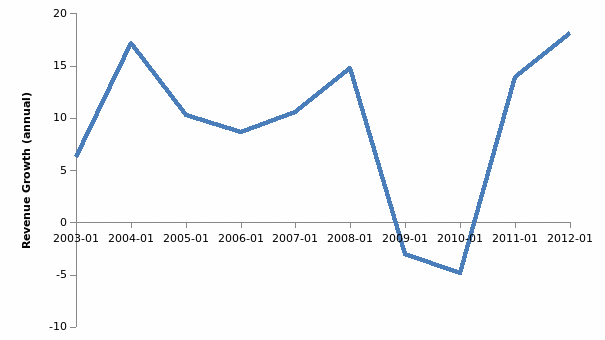Introduction
The company analysis proposed in this paper is that of Tiffany Co. Tiffany has been a household name for fine jewelry and silverware since 1853.
The company was established in 1837 as a small stationary store. Tiffany is known for its exclusivity and quality. This paper proposes a method of conducting an internal and external analysis of the company.
Company Background
Tiffany believes in providing extraordinary and innovative designs, immaculate craftsmanship, and an unforgettable customer experience.
Presently a public company, it operates through subsidiaries. Tiffany engages itself in product designing, manufacturing, and retailing of the products. Jewelry sales comprised of 91% of the net sales of the company, 8% to sale of products other than jewelry, and rest to the wholesale sale of diamonds .
The next section of the report will discuss the internal environment of the company and then move on to discuss the external environment.
Internal Analysis
The vision and mission statement of the company has been same for more than a century: the company aimed to creased unforgettable and exquisite products of “extraordinary beauty” that would be timeless Therefore the aim of the company is to become the world’s most famous and recognized jewelry manufacturer.
Financial Analysis
The company’s health can be best judged by analyzing the financial health of the company. For this purpose, I will review the annual report of Tiffany Co. of year 2011. Table 1 shows 5-year income statement of Tiffany.
Table 1: 5 year Income Statement of Tiffany Co.
An analysis of the key financial ratios shows that the company has been a highly profitable company for almost a decade. Ratio analysis from 2003 to 2012 shows that the net margin was at 11.13% in 2003, which started declining and fell to the lowest of 7.69% in 2009.
However it climbed back again to 12.06% in 2012. It shows that the company’s capacity to turn the revenues to profit has been becoming stronger. Figure 2 demonstrates the rate of growth of revenue from 2003 through 2012.
Figure 1: Revenue growth from 2003 to 2012

The cash flow of the company has been growing down as the ratio of free cash flow to net income showed that it became negative in 2005 and then again in 2009.
Further, it has been mostly very low at 0.09 in 2012. The quick ratio of the company demonstrated that the company has a lot of short term cash as in many instances the quick ratio is found to be greater than 1 as in 2010, 2011, and 2012. This demonstrates that the company has enough liquidity to pay off its short term debts.
Overall, the company’s financial health is sound. The fall in revenue in 2009-10 was mostly due to the recessionary pressure, however, the company clearly recovered from it since 2010.
Resources
The company’s brand name is one of its primary resources. Tiffany is associated with exquisitely made jewelry that has no rivals. It brags of high quality and sophistication. The reputation of the company also rests in its ethical business conducts and corporate governance.
The other importance resource of the company is its human capital. The designers and the manufacturers are the true assets of the company who help create the company’s products.
The company policy stipulates adherence to laws and avoidance of conflict . Further, the sales training at Tiffany is rigorous as the experience of purchasing a Tiffany product is equally important as the product itself.
Other than this, the company has retail assets and stores that provides the added advantage to the brand building effort. The company owns stores at prestigious locations and has diamond-mining stakes.
The Strengths of the company are its brand name and its strong financial record. Even when the luxury industry was facing losses, Tiffany retained its profits and soon made its financial figures strong.
Quality control of the products is highly important for the company as it helps in maintaining its brand image. The distribution and the supply chain of the company are very strong and add onto the internal strength of the company.
A few weaknesses of the company that was observed from the internal analysis of the company are that it operates in an industry that has a mature life cycle; therefore, the scope of growth is low.
The products are highly expensive and therefore cater only to a niche clientele. Recession had an adverse effect on the company’s financials. Further, the company is still more dependent on its sales in stores when the world is moving towards internet and mobile marketing.
External Analysis
The external analysis will comprise and understanding of the industry and the competitors of Tiffany. Tiffany operates in the luxury jewelry industry. the jewelry industry had been negatively affected by the recession. However, the performance of Tiffany has been much better than the industry average .
There are a few suppliers in the diamond market therefore; they had a strong power to dictate prices of diamond. Tiffany faces strong supplier power. Buyers too have a high power, as buyers are rich and have the accessibility to other retailers.
Tiffany faces the threat of substitutes, not only from the legitimate competitors but also from the forgery industry. Barrier to entry into the industry is high as the cost of entering is very high.
The global jewelry market is “competitively fragmented” . The company faces a lot of competition in all its product lines. From the product revenue and net income figures Louis Vuitton SA is the market leader followed by Financière Richemont SA .
References
Morningstar. (2012). Tiffany & Co. Web.
Tiffany. (2011, March). Annual Report. Web.
Yahoo Finance. (2012). Tiffany & Co. Web.